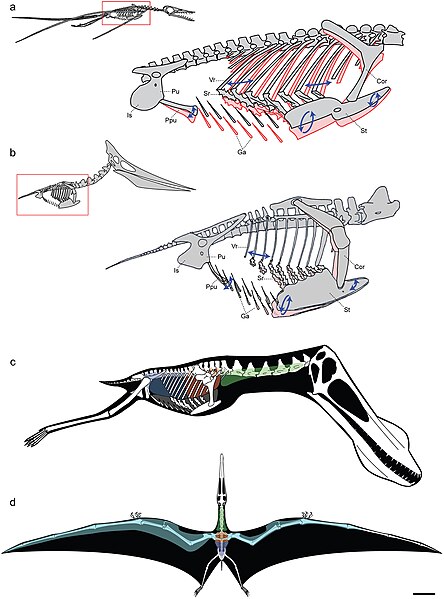Fichièr:Pterosaur respiratory system.jpg

Talha d'aquesta previsualizacion: 444 × 599 pixèls. Autras resolucions : 178 × 240 pixèls | 356 × 480 pixèls | 569 × 768 pixèls | 759 × 1 024 pixèls | 1 517 × 2 048 pixèls | 3 006 × 4 057 pixèls.
Fichièr d'origina (3 006 × 4 057 pixèl, talha del fichièr: 2,52 Mo, tipe MIME: image/jpeg)
Istoric del fichièr
Clicar sus una data e una ora per veire lo fichièr tal coma èra a aqueste moment
| Data e ora | Miniatura | Dimensions | Utilizaire | Comentari | |
|---|---|---|---|---|---|
| actual | 2 març de 2009 a 21.17 |  | 3 006×4 057 (2,52 Mo) | FunkMonk | {{Information |Description=Models of ventilatory kinematics and the pulmonary air sac system of pterosaurs. a, Model of ventilatory kinematics in Rhamphorhynchus. Thoracic movement induced by the ventral intercostal musculature results in forward and out |
Paginas que contenon lo fichièr
La pagina çaijós compòrta aqueste imatge :
Usatge global del fichièr
Los autres wikis seguents utilizan aqueste imatge :
- Utilizacion sus ar.wikipedia.org
- Utilizacion sus en.wikipedia.org
- Utilizacion sus es.wikipedia.org
- Utilizacion sus it.wikipedia.org
- Utilizacion sus ko.wikipedia.org
- Utilizacion sus nl.wikipedia.org
- Utilizacion sus outreach.wikimedia.org
- Utilizacion sus pt.wikipedia.org
- Utilizacion sus ru.wikipedia.org
- Utilizacion sus tr.wikipedia.org
- Utilizacion sus vi.wikipedia.org
- Utilizacion sus zh.wikipedia.org

